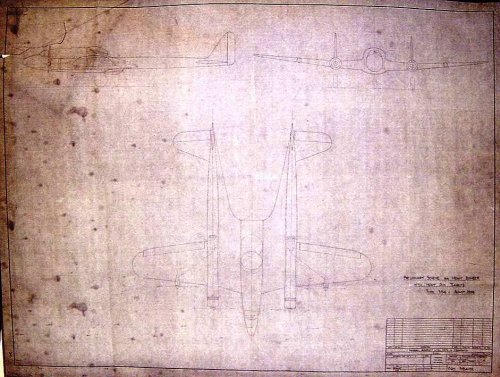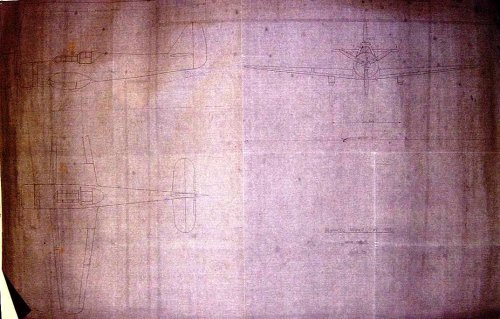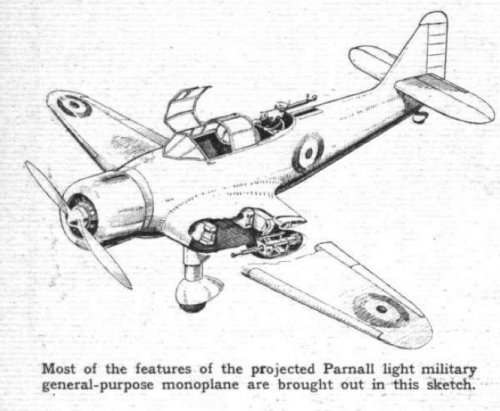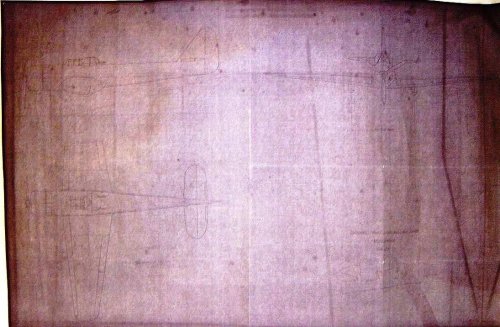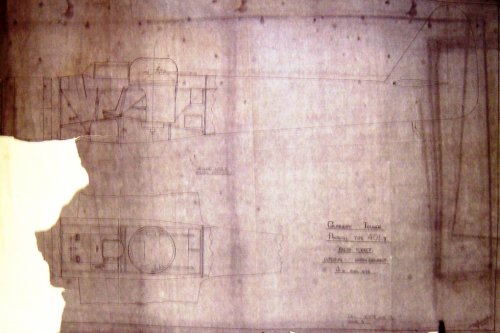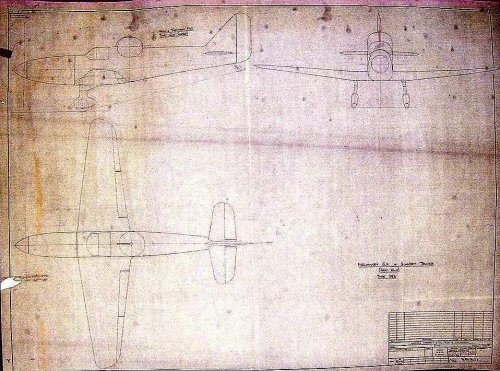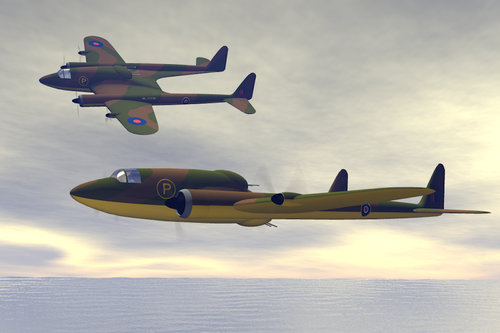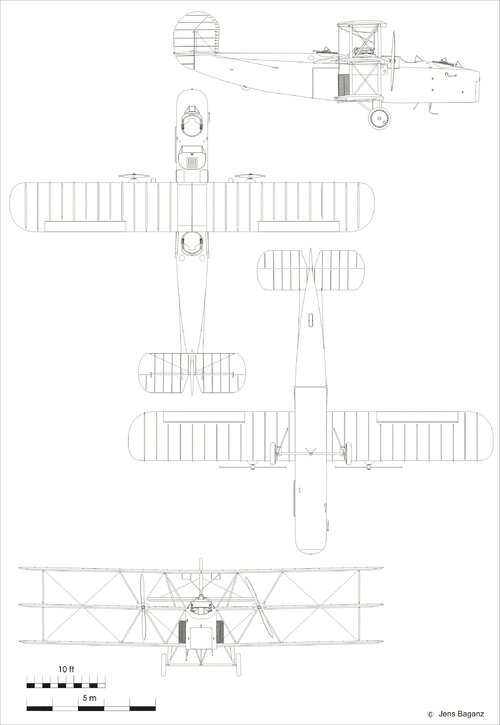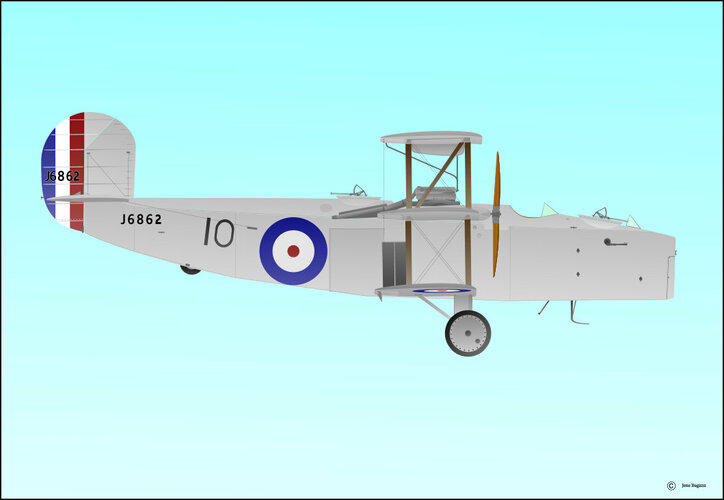You are using an out of date browser. It may not display this or other websites correctly.
You should upgrade or use an alternative browser.
You should upgrade or use an alternative browser.
Parnall Heavy Bomber Project of 1938 ?
- Thread starter hesham
- Start date
Lottie
Anything Parnall Yate related
- Joined
- 4 August 2017
- Messages
- 8
- Reaction score
- 12
Hi
I served my engineering apprenteship at Parnall's when K Wixey was researching for Putnam book. We found some cylinders of drawings the most interesting of which I kept copies. Attached the type 384 Heavy bomber. Generally as described by yourself. Also note engine layout outer props driven bi lineshafts? ,experimented layout in Parnall Possum of 1923. I also have other drawings of projects as per attached sheet.
Regards
I served my engineering apprenteship at Parnall's when K Wixey was researching for Putnam book. We found some cylinders of drawings the most interesting of which I kept copies. Attached the type 384 Heavy bomber. Generally as described by yourself. Also note engine layout outer props driven bi lineshafts? ,experimented layout in Parnall Possum of 1923. I also have other drawings of projects as per attached sheet.
Regards
Attachments
- Joined
- 19 October 2012
- Messages
- 1,984
- Reaction score
- 1,941
Is this a Basil Henderson design or the work of someone else, possibly as a purely theoretical scheme to show a projected Nash & Thompson low-profile gun turret? The drawing title is hard to read, I believe it says "Preliminary Scheme of Heavy Bomber with **** Gun Turrets" **** may be Light, can you confirm.
Thanks
PS We would all be grateful if you could share any other project drawings and information you have, but quite understand if you choose not to.
Thanks
PS We would all be grateful if you could share any other project drawings and information you have, but quite understand if you choose not to.
- Joined
- 6 September 2006
- Messages
- 4,834
- Reaction score
- 9,460
A most interesting find. Certainly a novel layout and design.
I think it might be "with twin gun turrets". I thought it might be two but doesn't look like an O at the end, the first letter looks like a T to me.
Those turrets look something like the large quad 20mm Hispano turrets of the B.1/39 entries, but I guess the Type 384 would slighty pre-date those designs? Is there is a date on the plan?
I wonder if that large inner wing section held all the bomb cellues?
I think it might be "with twin gun turrets". I thought it might be two but doesn't look like an O at the end, the first letter looks like a T to me.
Those turrets look something like the large quad 20mm Hispano turrets of the B.1/39 entries, but I guess the Type 384 would slighty pre-date those designs? Is there is a date on the plan?
I wonder if that large inner wing section held all the bomb cellues?
- Joined
- 19 October 2012
- Messages
- 1,984
- Reaction score
- 1,941
I read the date as August 1938. Project number is just two higher than the trainer built to T.1/37 and flown in 1938 so that would feel about right.
The turrets are also similar to those on the R.5/39 flying boat projects.
The turrets are also similar to those on the R.5/39 flying boat projects.
- Joined
- 19 October 2012
- Messages
- 1,984
- Reaction score
- 1,941
Worth cross-checking with this
https://www.secretprojects.co.uk/forum/index.php/topic,20030.0.html
As a bomber design it looks highly suspect to me; unreasonably complex engine drive system, double blind spots for the guns, restricted bomb bay as a result of large twin turrests. Possible, vaguely, to B.1/39 but probably just conceptual to illustrate how low drag turrets could be installed
https://www.secretprojects.co.uk/forum/index.php/topic,20030.0.html
As a bomber design it looks highly suspect to me; unreasonably complex engine drive system, double blind spots for the guns, restricted bomb bay as a result of large twin turrests. Possible, vaguely, to B.1/39 but probably just conceptual to illustrate how low drag turrets could be installed
- Joined
- 26 May 2006
- Messages
- 34,911
- Reaction score
- 15,786
Lottie said:Hi
I served my engineering apprenteship at Parnall's when K Wixey was researching for Putnam book. We found some cylinders of drawings the most interesting of which I kept copies. Attached the type 384 Heavy bomber. Generally as described by yourself. Also note engine layout outer props driven bi lineshafts? ,experimented layout in Parnall Possum of 1923. I also have other drawings of projects as per attached sheet.
Regards
Wow,amazing amazing find Lottie,and welcome aboard,
please we want to know the other Parnall Project drawings,and many thanks.
blackkite
Don't laugh, don't cry, don't even curse, but.....
- Joined
- 31 May 2007
- Messages
- 8,819
- Reaction score
- 7,718
HmHm.....Anyway very ambitious design.Schneiderman said:Worth cross-checking with this
https://www.secretprojects.co.uk/forum/index.php/topic,20030.0.html
As a bomber design it looks highly suspect to me; unreasonably complex engine drive system, double blind spots for the guns, restricted bomb bay as a result of large twin turrests. Possible, vaguely, to B.1/39 but probably just conceptual to illustrate how low drag turrets could be installed
- Joined
- 22 April 2012
- Messages
- 2,258
- Reaction score
- 2,309
Hood beat me to it, this looks a lot like it was designed towards B.1/39 and the associated ideal bomber studies that proceeded it (including B.19/38 from 1938). The timing certainly works for this specification series and its difficult to think of another requirement circulating at the time for which a heavy bomber would be designed. Certainly the very wide turrets, to the extent the fuselage appears shaped to accommodate them, hints at this and so does the matching over/under configuration of the turrets.
Is there any indication which engines it was designed around? The cowlings look radial but the actual engine drawings look more like they are in-line...?
It would be weird if we have a drawing of a Parnell design to this requirement but still not one of the HP design that was down-selected along with the Bristol Type 159.
The turrets are probably meant to be quads. With the exception of the complex drive system the other "weaknesses" you reference would have been very acceptable to the RAF in 1937/38. Bomber designs were being specified to only carry small bombs (hence the wing cells on multiple types and the ludicrous bomb bay/door arrangement on the Stirling) so a restricted bomb bay would have been fine and both the turrets have firing arcs that cover the areas from which Bomber Command thought fighter attacks were possible.
Is there any indication which engines it was designed around? The cowlings look radial but the actual engine drawings look more like they are in-line...?
It would be weird if we have a drawing of a Parnell design to this requirement but still not one of the HP design that was down-selected along with the Bristol Type 159.
Schneiderman said:As a bomber design it looks highly suspect to me; unreasonably complex engine drive system, double blind spots for the guns, restricted bomb bay as a result of large twin turrests. Possible, vaguely, to B.1/39 but probably just conceptual to illustrate how low drag turrets could be installed
The turrets are probably meant to be quads. With the exception of the complex drive system the other "weaknesses" you reference would have been very acceptable to the RAF in 1937/38. Bomber designs were being specified to only carry small bombs (hence the wing cells on multiple types and the ludicrous bomb bay/door arrangement on the Stirling) so a restricted bomb bay would have been fine and both the turrets have firing arcs that cover the areas from which Bomber Command thought fighter attacks were possible.
Last edited:
- Joined
- 19 October 2012
- Messages
- 1,984
- Reaction score
- 1,941
I'll have to diagree with that. Complex and unproven drives are most unlikely to have been considered acceptable and in a world where tail turrets were ubiquitous this layout offers a poor substitute. You may be right regarding the bomb load.JFC Fuller said:The turrets are probably meant to be quads. With the exception of the complex drive system the other "weaknesses" you reference would have been very acceptable to the RAF in 1937/38. Bomber designs were being specified to only carry small bombs (hence the wing cells on multiple types and the ludicrous bomb bay/door arrangement on the Stirling) so a restricted bomb bay would have been fine and both the turrets have firing arcs that cover the areas from which bomber command thought fighter attacks were possible.
I think what kills this for me is that Parnall really had no significant design capability at this time. Nash and Thompson bought-out Parnall mainly to acquire the factory space required to undertake their ever-expanding order book for turrets and the residue of the Hendy business was hardly up to the task of taking on a project of this size. To me the 381 was a quick and simple suggestion to enable low profile turrets to be tested and this 348 is a conceptual design for a bomber equipped with such a design. It would seem that Boulton Paul's turret was prefered, for reasons unknown, but that, too, was soon abandoned.
- Joined
- 22 April 2012
- Messages
- 2,258
- Reaction score
- 2,309
Schneiderman said:I'll have to diagree with that. Complex and unproven drives are most unlikely to have been considered acceptable and in a world where tail turrets were ubiquitous this layout offers a poor substitute. You may be right regarding the bomb load.
I think what kills this for me is that Parnall really had no significant design capability at this time. Nash and Thompson bought-out Parnall mainly to acquire the factory space required to undertake their ever-expanding order book for turrets and the residue of the Hendy business was hardly up to the task of taking on a project of this size. To me the 381 was a quick and simple suggestion to enable low profile turrets to be tested and this 348 is a conceptual design for a bomber equipped with such a design. It would seem that Boulton Paul's turret was prefered, for reasons unknown, but that, too, was soon abandoned.
The only way of mounting the heavy quad cannon turrets was to have them near the center of gravity so all the B.1/39 designs mounted them in upper and lower configurations towards the center of gravity (see the Bristol Type 159 as an example of this). Even when twin 20mm turrets were considered for the Lancaster and Halifax they were proposed in upper/lower nearer to CoG positions with the tail position replaced with an observer to spot targets for the gunners.
It is only the engine configuration that stands out as being particularly silly in this design when placed against the B.1/39 requirement. Everything else matches what was then Bomber Command thinking, specifically around the ideal bomber effort. Having limited design capability never seems to have been an inhibitor to British aircraft firms dreaming up elaborate schemes to air ministry requirements.
- Joined
- 6 September 2006
- Messages
- 4,834
- Reaction score
- 9,460
I'm with JFC Fuller here, this design feels too much like the B.1/39 designs to be a coincidence.
Looking at this and the Type 281 there is close similarity, especially in the plan view, if you remove the rear fuselage, add two booms and stretch the sharply-swept inner wing trailing edge back then the result would be very similar. So I would say the 281 inspired the 284 but I doubt its a twin-boom Type 281 variant as a pure research aircraft as there would be no need to add two engines and the outer driveshafts. So it seems to be a proposal to make a functional bomber design. The fad for individual 250-500lb bomb cells could well have been accommodated in the big inner wing section (double or triple rows perhaps). I would agree this was not a formal submission however.
Maybe Parnall had their ear to ground or more likely heard about the spec from Nash & Thompson. I would agree with Schneiderman that Nash & Thompson were probably the inspiration behind Parnall drawing up this study. It makes sense the turret manufacturer might have wanted a aircraft designer's opinion of the feasibility of the Ideal Bomber specification before embarking and investing on a new development. Indeed, the unofficial status of the design might have given Parnall the confidence to play with the driveshaft-driven outer props, in a sense they had nothing to lose.
I wonder if the short illegible word with a wonky 'T' isn't actually 20mm making the description "with 20mm gun turrets". If so, that would remove much of the doubt.
Looking at this and the Type 281 there is close similarity, especially in the plan view, if you remove the rear fuselage, add two booms and stretch the sharply-swept inner wing trailing edge back then the result would be very similar. So I would say the 281 inspired the 284 but I doubt its a twin-boom Type 281 variant as a pure research aircraft as there would be no need to add two engines and the outer driveshafts. So it seems to be a proposal to make a functional bomber design. The fad for individual 250-500lb bomb cells could well have been accommodated in the big inner wing section (double or triple rows perhaps). I would agree this was not a formal submission however.
Maybe Parnall had their ear to ground or more likely heard about the spec from Nash & Thompson. I would agree with Schneiderman that Nash & Thompson were probably the inspiration behind Parnall drawing up this study. It makes sense the turret manufacturer might have wanted a aircraft designer's opinion of the feasibility of the Ideal Bomber specification before embarking and investing on a new development. Indeed, the unofficial status of the design might have given Parnall the confidence to play with the driveshaft-driven outer props, in a sense they had nothing to lose.
I wonder if the short illegible word with a wonky 'T' isn't actually 20mm making the description "with 20mm gun turrets". If so, that would remove much of the doubt.
- Joined
- 19 October 2012
- Messages
- 1,984
- Reaction score
- 1,941
Hood said:....Maybe Parnall had their ear to ground or more likely heard about the spec from Nash & Thompson. I would agree with Schneiderman that Nash & Thompson were probably the inspiration behind Parnall drawing up this study. It makes sense the turret manufacturer might have wanted a aircraft designer's opinion of the feasibility of the Ideal Bomber specification before embarking and investing on a new development. Indeed, the unofficial status of the design might have given Parnall the confidence to play with the driveshaft-driven outer props, in a sense they had nothing to lose.
Don't forget that Parnall were wholly owned by Nash and Thompson by this date, the business was all about selling turrets so initiating a conceptual design that +/- fitted B.1/39 would have been a sensible study to undertake.
- Joined
- 19 October 2012
- Messages
- 1,984
- Reaction score
- 1,941
You are absolutely right, the B.1/39 contenders are all equally compromised in arc of fire, so the Parnall concept is no worseJFC Fuller said:The only way of mounting the heavy quad cannon turrets was to have them near the center of gravity so all the B.1/39 designs mounted them in upper and lower configurations towards the center of gravity (see the Bristol Type 159 as an example of this)....
Lottie
Anything Parnall Yate related
- Joined
- 4 August 2017
- Messages
- 8
- Reaction score
- 12
Hi
Have general arrangement drawings of all listed below designs. Will get drawings from attic and expand data below with draughtsman, dates and any other details not present listed.
Parnall type 381 Gunnery Research Aircraft
3 Man crew, Pilot, Radio Operator/Loader and Gunner.
2 Bristol Hercules HE6 engines, Wingspan 63’ 6”, Length 61’ 3”
2 different versions upper and lower turret.
Designed around 15/11/1938
No turret identification, but looks on drawings as a large calibre weapon as there is a seat for ‘gunner’ drawn and shells stacked in racks alongside gun. Drawing of gun also looks large. Sound proofing in roof above pilot and radio operator? (see air enthusiast sept 1994)
Parnall type 383 Gunnery Trainer
2 Man crew, Pilot and Gunner.
Single Engined Gipsy King Wingspan 32’ Length 30’
Turret Nash and Thompson FN5
Designed around 30/8/1938
Parnall type 384 Heavy Bomber Heavy Turrets (2)
4 Engines, 2 inline each side with rear engines turning airscrews outboard via line shafts? (As experimented in the Parnall Possum of 1923)
Span 91’ 10” Length
Designed around 30/8/1938
Parnall type 401 Research Aircraft
Single Engined Bristol Mercury
Span 42’ Length 35’ 11”
Turret Nash and Thompson FN5
Designed around 30/8/1938
Parnall type 401 with Turret
Single Engined Bristol Mercury
Span 42’ Length 35’ 11”
Turret Nash and Thompson FN33
Designed around 13/2/1940
Have general arrangement drawings of all listed below designs. Will get drawings from attic and expand data below with draughtsman, dates and any other details not present listed.
Parnall type 381 Gunnery Research Aircraft
3 Man crew, Pilot, Radio Operator/Loader and Gunner.
2 Bristol Hercules HE6 engines, Wingspan 63’ 6”, Length 61’ 3”
2 different versions upper and lower turret.
Designed around 15/11/1938
No turret identification, but looks on drawings as a large calibre weapon as there is a seat for ‘gunner’ drawn and shells stacked in racks alongside gun. Drawing of gun also looks large. Sound proofing in roof above pilot and radio operator? (see air enthusiast sept 1994)
Parnall type 383 Gunnery Trainer
2 Man crew, Pilot and Gunner.
Single Engined Gipsy King Wingspan 32’ Length 30’
Turret Nash and Thompson FN5
Designed around 30/8/1938
Parnall type 384 Heavy Bomber Heavy Turrets (2)
4 Engines, 2 inline each side with rear engines turning airscrews outboard via line shafts? (As experimented in the Parnall Possum of 1923)
Span 91’ 10” Length
Designed around 30/8/1938
Parnall type 401 Research Aircraft
Single Engined Bristol Mercury
Span 42’ Length 35’ 11”
Turret Nash and Thompson FN5
Designed around 30/8/1938
Parnall type 401 with Turret
Single Engined Bristol Mercury
Span 42’ Length 35’ 11”
Turret Nash and Thompson FN33
Designed around 13/2/1940
Attachments
- Joined
- 19 October 2012
- Messages
- 1,984
- Reaction score
- 1,941
Excellent, many thanks.
- Joined
- 26 May 2006
- Messages
- 34,911
- Reaction score
- 15,786
- Joined
- 19 October 2012
- Messages
- 1,984
- Reaction score
- 1,941
Hesham, according to Lottie's post the 383 had a Gipsy King engine and a FN5 turret (as fitted to the Wellington, front and rear). That artist's conceptual drawing has a radial and no turret.
Basically it sounds like the 383 was similar to the DH Don, lets see what Lottie posts.
Basically it sounds like the 383 was similar to the DH Don, lets see what Lottie posts.
Lottie
Anything Parnall Yate related
- Joined
- 4 August 2017
- Messages
- 8
- Reaction score
- 12
Hi
Found copies of other Drawings, have not got others out of roof yet.
Hope these are of interest, sorry they are not clearer ,photos of prints.
Regards
Found copies of other Drawings, have not got others out of roof yet.
Hope these are of interest, sorry they are not clearer ,photos of prints.
Regards
Attachments
- Joined
- 19 October 2012
- Messages
- 1,984
- Reaction score
- 1,941
Lottie this is all great new information, thank you so much for sharing.
Lottie
Anything Parnall Yate related
- Joined
- 4 August 2017
- Messages
- 8
- Reaction score
- 12
Have looked through prints I have, most of the schemes have no extra information apart from draftsman George H. Stone or J.O. Eke.
Numerous other prints of Parnall Type 382 trainer. One of which is a blue print showing all the mechanical linkages in the cockpit area and another showing the different stages of final assembly of the type. If I remember correctly there were many detail drawings of this type in the rolls that were found.
There seem to be some odd drawings of Hendy types I cannot identify.
A very unusual print is of a copper sheath to protect the leading edge of a propeller fitted to a Mongoose engine. The aircraft model I think fitted this was the Peto submarine launched type.
Where this collection of drawings is now I do not know.
Any other information I can give please ask. I am always on lookout for any Parnall related info.
Numerous other prints of Parnall Type 382 trainer. One of which is a blue print showing all the mechanical linkages in the cockpit area and another showing the different stages of final assembly of the type. If I remember correctly there were many detail drawings of this type in the rolls that were found.
There seem to be some odd drawings of Hendy types I cannot identify.
A very unusual print is of a copper sheath to protect the leading edge of a propeller fitted to a Mongoose engine. The aircraft model I think fitted this was the Peto submarine launched type.
Where this collection of drawings is now I do not know.
Any other information I can give please ask. I am always on lookout for any Parnall related info.
- Joined
- 19 October 2012
- Messages
- 1,984
- Reaction score
- 1,941
Many thanks Lottie, all new information is of value.
George H Stone I do not know but J.O.Eke was part of Supermarine's design department at the time of the Stranaer, Walrus and early Spitfire, so had considerable design experience.
Do you have copies of the original drawings for the Type 381? the drawings and artwork in Air Enthusiast are a bit contradictory.
I do hope the other drawings that you refer to have found a good home in an archive somewhere.
George H Stone I do not know but J.O.Eke was part of Supermarine's design department at the time of the Stranaer, Walrus and early Spitfire, so had considerable design experience.
Do you have copies of the original drawings for the Type 381? the drawings and artwork in Air Enthusiast are a bit contradictory.
I do hope the other drawings that you refer to have found a good home in an archive somewhere.
- Joined
- 19 October 2012
- Messages
- 1,984
- Reaction score
- 1,941
- Joined
- 19 October 2012
- Messages
- 1,984
- Reaction score
- 1,941
Gunnery trainers? Oh no, no, no......far too boring....,please can you make this with Model-383 and Model-401 ?,and thanks.
Flying Sorcerer
ACCESS: Confidential
- Joined
- 18 June 2008
- Messages
- 129
- Reaction score
- 97
Are the outboard engines smaller than the inboard ones?
- Joined
- 19 October 2012
- Messages
- 1,984
- Reaction score
- 1,941
See #19. There are radials for the inner props and some type of V water-cooled driving the outers. These engines are located in the booms adjacent to the wing trailing edge and drive the outer props via long diagonal shafts. A totally impractical installation which is one reason why I see this scheme as no more than schematic and not aimed at any particular specificationAre the outboard engines smaller than the inboard ones?
nfilippone
ACCESS: Restricted
- Joined
- 9 October 2009
- Messages
- 8
- Reaction score
- 6
I apologize for suddenly injecting myself into this interesting thread, but since it is Parnell related, I thought one of you might be able to help me. I have been searching, without success, for a 3-view of the Parnall Possum in order to scratch build a model of it. For whatever reason, the Putnam book on Parnall does not provide a 3-view. Would anyone be able to direct me to a source? Thank you.
Regards, Nick Filippone
Regards, Nick Filippone
nfilippone
ACCESS: Restricted
- Joined
- 9 October 2009
- Messages
- 8
- Reaction score
- 6
Thank you. Nick
- Joined
- 11 March 2006
- Messages
- 8,625
- Reaction score
- 3,806
Was looking, too, about 5 years ago, and I'm pretty sure, there is one ... somewhere, but I couldn't find
any back then, why I had to try it on my own, using the photos from Putnam (the same photos are floating around
on several sites, I think). So it's just source grade 2, that means rather speculative, not to mention the colour profile. When you want a better resolution, or the vector file, just give a shout.
any back then, why I had to try it on my own, using the photos from Putnam (the same photos are floating around
on several sites, I think). So it's just source grade 2, that means rather speculative, not to mention the colour profile. When you want a better resolution, or the vector file, just give a shout.
Attachments
Similar threads
-
-
-
Short S.34 and Super Stirling proposals
- Started by Apophenia
- Replies: 11
-
British B.1/39 Heavy Bomber Competition
- Started by blackkite
- Replies: 22
-
Vickers 'Victory' & 'Jet' Bombers
- Started by danielgrimes
- Replies: 19

